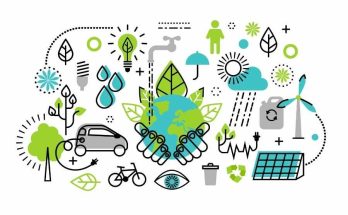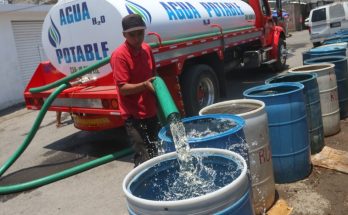By Alejandro Angulo
To end this series of articles having to do with food, health, and the environment, I want to tell you about how humans waste a considerable amount of food. The international definition of food waste is, “The decrease in the quantity or quality of food as a result of the decisions and actions of retailers, food service providers, and consumers.” The Food and Agriculture Organization (FAO) has pointed out that, “Hunger in the world is increasing, yet approximately one-third of all food produced globally is lost or wasted. We all have a role to play in reducing food loss and waste, not just because of the food but because of the resources it takes to produce it.”
According to FAO statistics, in Mexico more meat products are wasted (around 37%), than fruits and vegetables (10%). Between harvest and retail alone, close to 14% of the total food produced worldwide is lost. The United Nations Environment Program (UNEP) estimates that between 8% and 10% of global greenhouse gas emissions are associated with food that was never eaten. The UNEP figures come from the Information from the Food Waste Index 2021, published by UNEP. According to these, in 2019 food waste was estimated at 931 million tons, of which 61% came from households, 26% from food service, and the remaining 13% from retail, such as supermarkets or small stores.
Seen from the production and consumption chain, waste occurs both during the harvest phase as well as during selection, transportation, storage, distribution, and consumption. With these, the global percentage increases considerably to around 47%. Regarding Mexico, figures from the Food Bank of Mexico (BAMX) show that a third of the food produced is wasted, representing 38 tons per minute, an amount that could well feed 25.5 million people with food shortages. In Mexico, there are different non-profit organizations and private assistance organizations dedicated to rescuing food, such as the following:
Food Banks of Mexico https://bamx.org.mx/
Food for All https://apt.org.mx/
To Share https://www.acompartir.org/
Various sources estimate that about 35% of all food prepared and produced in Mexico is thrown away. The level of waste can reach up to 40% when you consider white meat such as chicken and fish, and 37% for beef. It is said that large Mexican cities like Mexico City, Monterrey, and Guadalajara are responsible for much of the food waste, in a country where nearly 50 million Mexicans have problems accessing food baskets.
Among the reasons for food waste are inefficient harvesting techniques, facilities without adequate refrigeration, sales agreements that generate losses, and expiration. Demanding aesthetic standards can lead to the rejection of products that do not meet a certain shape or appearance, despite being safe for consumption.
A note published by Notimex shows that since 2020 in Mexico 20.4 million tons of food are wasted each year. This is an average of almost 158 kilos per person, or half a kilo per day, and 56,000 tons nationally, according to World Bank data. This is equivalent to 34% of production for human consumption.
Wasting food is not free. The economic losses are estimated at 491,000 million pesos, approximately 2.5% of Mexico’s gross domestic product for the year 2017.
The environmental footprint of this waste is enormous. Those 20.4 million tons of food wasted in Mexico generate 36 million tons of carbon dioxide (CO2), which corresponds to the annual emissions of almost 16 million vehicles. The water footprint of waste is also massive. The water used to produce food that later ends up in the garbage is 40,000 million cubic meters, equal to the water consumption of all the residents of the country for 2.4 years.
The Inter-American Development Bank (IDB) believes that a scenario with almost zero waste can be achieved with the help of technology and innovation. Because of this, they decided to launch, together with a series of partners from the private sector and civil organizations, the #SinDesperdicioMéxico contest.
It is paradoxical that abundance results in waste. Supermarkets prefer to make large purchases so their shelves don’t look empty. They purchase more than consumers buy, thus creating waste. Something similar takes place with individual families. Many tend to avoid food shortages by stocking up the refrigerator or cupboard, and what they do not consume ends up in the garbage can. Urban life has created different food patterns—fast food, precooked food, frozen food, and canned food. Food losses and waste begin with the first link in the chain—food production. When vegetables, for example, are overproduced this leads not only to falling prices but also to vegetables being thrown away. At the harvest level of the food chain, it is customary to pick only what is considered first and second grade, leaving the rest in the field. Choosing products, especially those that are exported, involves selection of size, color, and appearance, with those not considered “fit enough” being discarded. Finally, consumption at home or in restaurants often results in leftovers that end up in the trash. In primitive societies, an individual had only what he or she could carry, but today’s supermarket cart carries more than can be consumed. For the supermarket, the important thing is to increase product sales, without regard for the associated waste.
To conclude, I will say that there are various recommendations to avoid food waste and loss. The first and most important recommendations, according to the FAO, are buying only the food you need, learning to love fruits and vegetables, and serving yourself realistic portions. Be mindful of expiration dates, store food wisely, donate surplus, and turn leftover food into the next day’s meal. When we waste food, we also waste all the resources used to grow, process, transport, and market that food.
Food is much more than what is on our plates. Since 2017, a «warning of world scientists to humanity: a second warning» was launched and includes the following steps that humanity must take: reduce food waste through education and better infrastructure, and promote changes in diet towards mainly plant-based foods. Waste has environmental impacts in terms of water use, soil degradation, energy use, greenhouse gas emissions, and waste generation.




